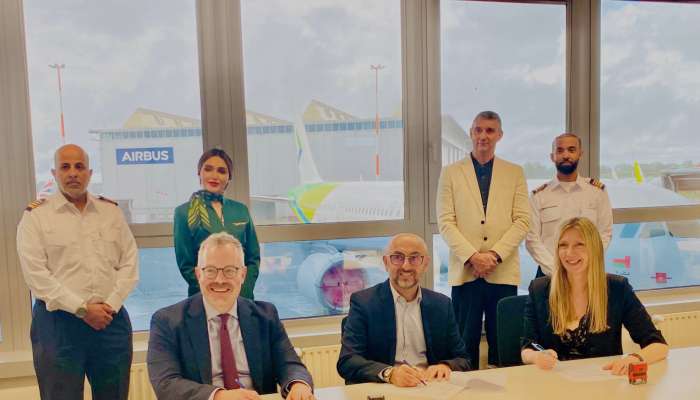
Muscat: SalamAir, Oman’s low-cost carrier, has announced the arrival of its newest aircraft, the Airbus A321neo named “Muttrah”, which was chosen through an Instagram vote by our passengers and followers. This new addition brings SalamAir’s fleet to 14 aircraft and further strengthens the airline’s commitment to efficient operations, enhanced passenger comfort, and environmental responsibility.
Powered by advanced CFM LEAP-1A engines, the A321neo offers significant sustainability and performance benefits, including up to 20% reduction in fuel burn per seat and lower CO₂ emissions. The aircraft also meets the highest environmental standards, with NOx emissions cut by 50% and noise levels reduced by over 15 decibels compared to International Civil Aviation Organization (ICAO) regulations.
With a seating capacity of 212, the aircraft features a modern cabin design with USB charging ports at every seat, offering a more comfortable and connected travel experience. Its extended range of up to 4,000 nautical miles enhances SalamAir’s operational flexibility and opens new opportunities for medium- and long-haul routes.
Adrian Hamilton-Manns, Chief Executive Officer of SalamAir, commented: “The addition of this new A321neo to our fleet marks a key milestone in boosting our operational capability ahead of the peak travel season. This aircraft will provide us with greater flexibility to uphold schedule reliability and further improve our on-time performance (OTP).” He added: “With this addition and another aircraft expected later this month, the average age of our fleet will decrease from 5.6 years to approximately 4.8 years. Operating one of the youngest fleets in the region supports our focus on efficiency, reliability, and delivering greater value to our guests.”
The addition of the A321neo also supports SalamAir’s broader strategic plan, which includes fleet expansion, network diversification, and operational excellence. With a younger and more capable fleet, the airline is well-positioned to explore new markets, increase frequencies on high-demand routes, and further contribute to Oman’s aviation and tourism sectors.